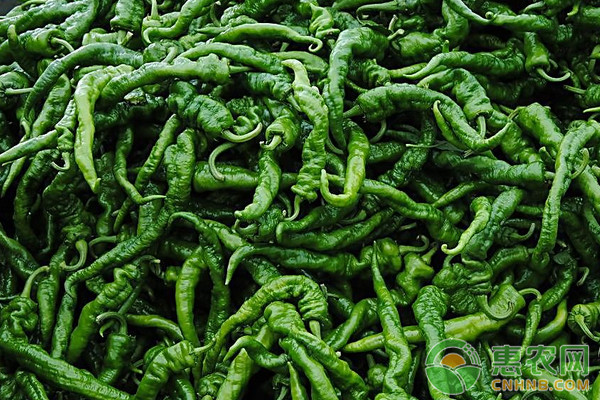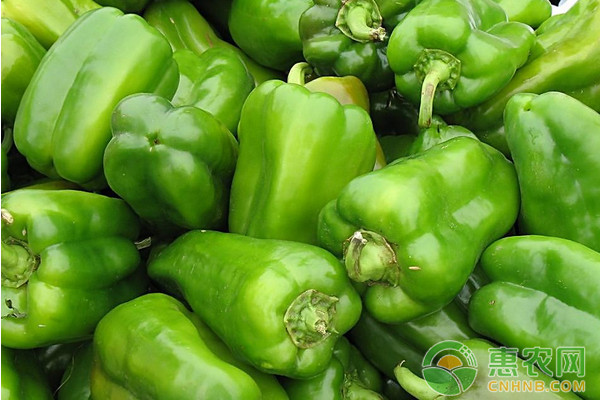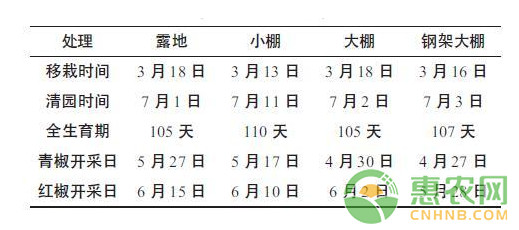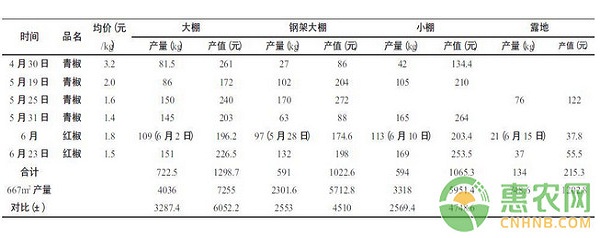One of the main vegetable varieties in Jiangxi Province is pepper. At present, the annual planting area of ​​peppers in Jiangxi Province is about 33,300 hm2. In recent years, some experts have carried out experimental demonstrations of early pepper seedlings and rain-proof cultivation techniques, using different rain-proof cultivation models, summed up the early pepper-proof cultivation techniques, and carried out demonstration and promotion.

1 Test location
Test and plant in Gao'an, Yongfeng and other places.
2 planting management
2.1 Cultivate strong seedlings
Adopt a large shed cover shed seedling mode. According to the local climate, consumption habits and market demand, choose varieties with early maturity, strong resistance, high yield and good commodity, and sow them from the end of September to the beginning of October. After sowing, the daytime temperature is 28~30 °C, the night temperature is about 18~20 °C, and the seedlings can be emerged after 7~10d. In mid-November, when seedlings 2 leaves 1 heart or 3 leaves 1 heart, seedlings were divided. After the seedlings are slowed down, the small shed film in the greenhouse must be uncovered as much as possible during the daytime so as not to cause freezing damage. In early February of the next year, the seedlings were covered with 10 true leaves, and the ventilation was gradually increased 7 to 10 days before planting.
2.2 Shiji fertilizer site scaffolding
Before the selection, the rice was planted in rice or non-solanaceae, and the soil was deeply ploughed twice. Before the first deep ploughing, 667 m2 was applied with 75 kg of quicklime. Before the second deep ploughing, 667 m2 was applied to 2500 kg of decomposed farmyard manure, 100 kg of calcium magnesium phosphate fertilizer, and ternary compound fertilizer. 50kg. In the north-south direction, the ditch width is 0.4~0.5m and the depth is 0.3~0.4m, which is determined according to the topography. Different planting modes are used to build different shelters.
2.3 Reasonable close planting
The size of the pepper seedlings is 15~20 cm high, and the true leaves are about 10 pieces. There are 1~2 grades of branches and flowers. In the first ten days of March, I chose to plant in sunny days. The row spacing is 40~45cm, and the plant spacing is 30~35cm. The depth of planting is not to bury the cotyledons, and the root water is poured in time after planting, and sprayed once with 70% methyl thiophanate WP 1000 times. Open field transplants later.

2.4 Water and fertilizer temperature management
After planting, try to increase the temperature and humidity in the shed. The temperature during the day is kept at 25~30°C, and the relative humidity of the air is over 90%. After 7 days of colonization, it was transferred to normal management. After survival, 667m2 was applied with a concentration of 1% of ternary compound fertilizer 5~8kg. The second top dressing was carried out after 10~15 days, and the amount of fertilizer applied was the same as the first time. After each picking of 1 batch of fruit, the foliar top dressing can be carried out once, using 0.2% potassium dihydrogen phosphate + 0.2% quick liquid boron solution or other foliar fertilizer. In the spring, timely drainage and anti-staining, timely irrigation in the later drought. At the end of February to the beginning of April, pay attention to cold insulation. In the early evening, the temperature in the shed should be kept above 15 °C. After the temperature rises, pay attention to timely ventilation and cooling.
2.5 Comprehensive prevention and control of pests and diseases
The main diseases include rickets, diseases, viral diseases, anthracnose diseases, etc. The main pests are aphids, whitefly and tobacco budworms. Take prevention as the mainstay and comprehensive prevention and treatment.
2.6 Harvesting at the right time, grading packaging and listing.
3 Materials and methods
3.1 Test materials The test variety was selected from “Xinxiang No. 2â€, which was an early maturing variety.
3.2 Test design Using large area comparison test, set up 4 treatments, each treatment 3 repetitions, each repetition 120m2, surrounded by protection lines, row spacing 40~45cm, plant spacing 30~35 cm, 667m2 planting 3000 plants. The four treatments are: steel frame greenhouses, greenhouses, small sheds, and open fields. The steel frame greenhouse is planted in a common steel frame greenhouse; the greenhouse is treated with steel bamboo structure, the length, width and height are 20m, 6m, 2.2m, covered with 0.8mm ordinary film; the small shed is treated with bamboo structure, length and width. The height is 60m, 2m, 0.5m, covered with 0.4mm ordinary film to protect from rain and heat; the exposed area: length and width are 30m×4m. Each raft includes a 2m wide groove and is double-doubled.
4 Results analysis
The results of the test were recorded in the field and in the field of production, and data analysis was performed using Excel.
4.1 Growth period analysis
Among the four treatments, the mining time of green peppers and red peppers in small sheds, greenhouses, and steel sheds was earlier than that of open fields. In particular, green peppers in steel greenhouses were mined one month earlier than open fields. Early spring film coverage of peppers can increase the effective accumulated temperature in the early stage, and early harvesting time can be listed in advance.
4.2 Analysis of pesticide use
It can be seen from Table 2 that the open field is used twice more than the small shed, the greenhouse, and the steel frame greenhouse. Capsicum rain-proof cultivation can reduce the field humidity in the middle and late stages of pepper growth, block the spread of pests and diseases, reduce the occurrence of pests and diseases, reduce the number of medications, and improve the quality of peppers.
Table 1 Growth period record

Table 2 Record of pesticide use

4.3 Analysis of output and output value
In Table 3, the calculated area of ​​the total output and the output value was 120 m2 for each treatment. According to the test data, it can be seen from the production point of view that the cultivation of capsicum exposed land is significantly different from that of greenhouses, small sheds, steel frame greenhouses, etc. The yield of greenhouses in rain-proof cultivation is 21.6% higher than that of small sheds and steel frame greenhouses. 22.2%, the difference between greenhouses and small sheds, steel sheds is significant; from the output ratio, there is a significant difference between steel sheds and small sheds and greenhouses, and the difference between greenhouses and sheds is not significant. In the model of pepper shelter cultivation, the greenhouse and shed mode have the highest economic benefits, and can be listed in advance, reducing the number of pesticides used and improving the quality of peppers.
Table 3 Production and output value record

5 Conclusions and discussion
The test results show that the techniques of early pepper and rain-proof cultivation application facilities cultivation, centralized seedling cultivation and large seedlings transplanting flowers have obvious technical advantages. First, the plastic film covers the heat preservation, which increases the effective accumulated temperature in the early stage, improves the survival rate of transplanting, and advances the harvesting and market time of the pepper. The second is to avoid the problem of falling flowers and fruit caused by rain, which effectively increases the fruit setting rate and increases the output. The third is to reduce the field humidity in the middle and late stages of pepper growth, block the pathogens of rainwater transmission, reduce the pests and diseases, reduce the number of pesticides used, improve product quality and planting benefits, and effectively increase farmers' income. In the rain-proof cultivation mode, the greenhouse and the small arch shed have the best effect, and each has its own advantages. The greenhouse cultivation is beneficial to the field operation, the small arch shed saves cost, and is flexible and easy to dismantle. In the process of pepper planting, the problem of continuous cropping is more serious. The flexibility of the small arch shed is more conducive to the rotation of the pepper. The practice of water and drought during the year of the pepper and the late rice can better solve the obstacle problem of continuous pepper production and reduce the number of pests and diseases.
The above is the technology of rain-preserving cultivation of early peppers in the south of Jiangxi Province. The vegetable farmers who want to let their own peppers come to the morning market can come to Huinong.com to refer to this case.
Office Fingerprint Safe,Digital Fingerprint Safe,Fingerprint Biometric Safe Box,Electronic Biometric Fingerprint Lock
Ningbo Reliance Security Technology CO.,Ltd , https://www.reliancesafes.com